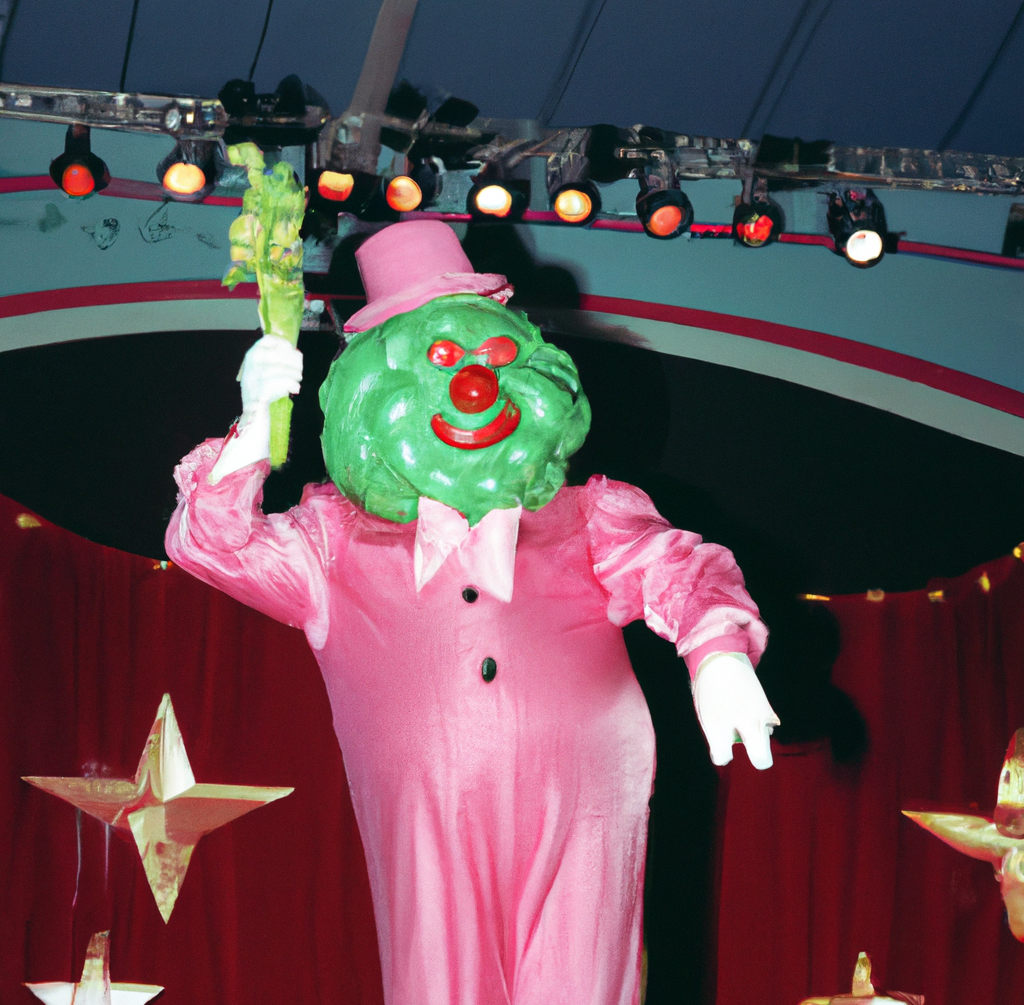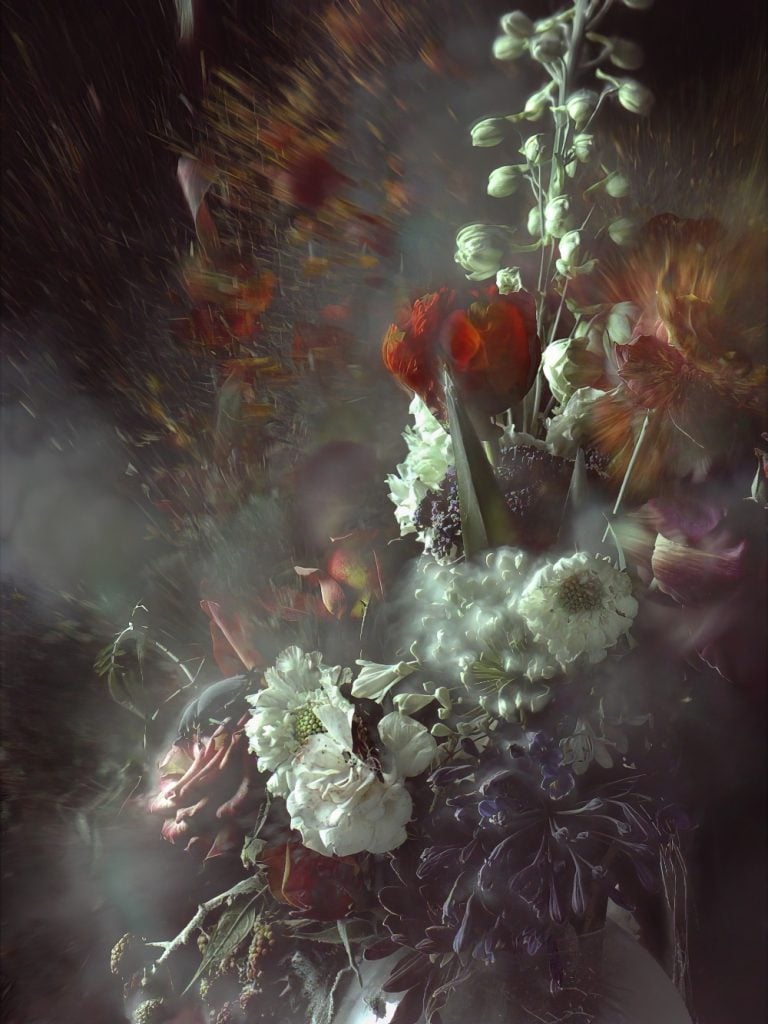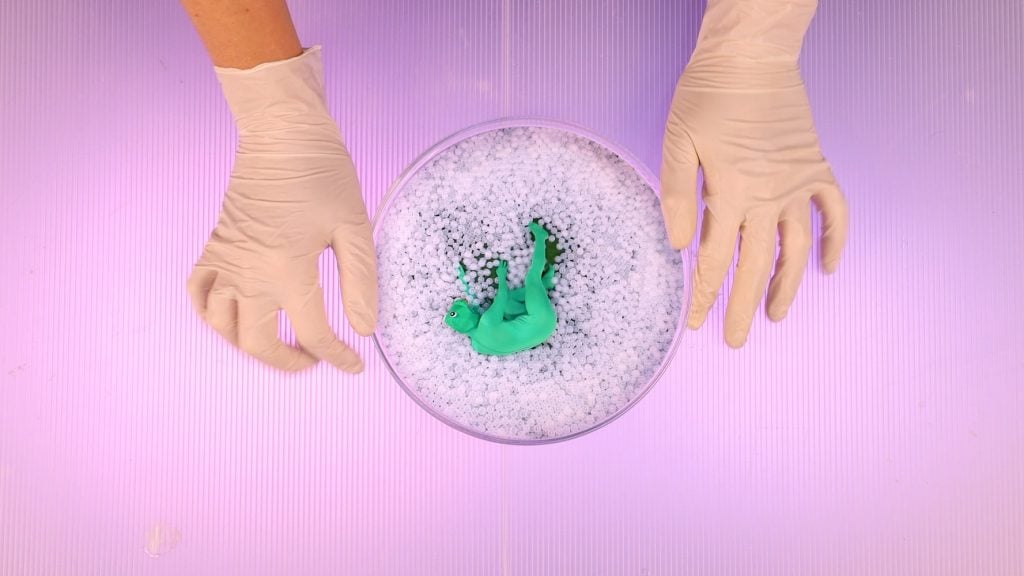Art Fairs
The Newly Opened Photo London Includes Several A.I.-Generated Works to Showcase Artists’ Experiments With the Tool
The works include those by Ori Gersht, Maisie Cousins, and kennedy+swan.

The works include those by Ori Gersht, Maisie Cousins, and kennedy+swan.

Jo Lawson-Tancred

Photo London has always showcased new developments in the medium, and this year’s visitors can expect to see something that can only be a sign of the times. Several photographs partially created using A.I. have been included in the eighth edition, which opened to the public at Somerset House on May 11.
Exhibiting with Michael Hoppen Gallery, the London-based Israeli photographer Ori Gersht has experimented the technology by taking photos of still life scenes inspired by 17th-century Dutch painting but in low resolution, later upscaling the works by using A.I. to fill in the missing details.
“To illustrate this fusion between the real and the artificial, I often use the analogy of a stretched stocking: whereby the fabric is the photograph of the real event and the holes are the missing information,” said Gersht. “The more the fabric is stretched, the larger the gaps become, prompting the software to analyze the photographs and utilize its acquired knowledge to envisage the absent data and bridge the holes.”

Ori Gersht, Fusing Time 04 (2022). Photo courtesy Michael Hoppen Gallery, London.
The Lisbon gallery Artemis is presenting works by the Berlin pair kennedy+swan who, in their own words, “(ab)use” A.I. alongside a range of digital tools in animated works like in vivo• in vitro • in silico (2023), which examines the implications of Xenobots, programmable nanoparticles that may one day be used to cure diseases. The work prompts critical questions: Are cutting-edge technological solutions like these hackable? Or how will the data they collect be used? In doing so, it makes the case that emerging technologies are naturally the best medium through which to explore… emerging technologies.
The existence of A.I.-generated photographic-style pictures have been controversial since the very moment they were first conceived, raising concern about how they might impact the livelihoods of artists. Earlier this month, the artist Molly Crabapple addressed publishers with an open letter encouraging them to limit their use of these types of images.
Memorable headlines of recent include the eerie, black-and-white image The Electrician (2022), generated in the style of Robert Ballen, which was submitted to the 2023 Sony World Photography Awards and won a $5,000 cash prize. An uproar of online dissent was also sparked by Amnesty International’s decision to illustrate a new report about police brutality in Colombia with an A.I.-generated image of a protestor.

kennedy+swan, in vivo in vitro in silico. Photo courtesy Artemis gallery.
The organizers of Photo London have stressed, however, that the photographers have generally used A.I. to enhance their work rather than create a new image from scratch.
Even in the case of Maisie Cousins, whose solo show at T.J. Boulting gallery includes works entirely generated using A.I., the images complement her traditional photographs. The garishly bright images manage to evoke distant memories and lost sensations from childhood in a way that is not so much nostalgic as strangely grotesque. Though the scenes have a universally recognizable quality (for British audiences at least) that is reminiscent of the photographer Martin Parr, they refer specifically to Cousin’s trips with her grandfather to the now defunct amusement park Blobbyland.
“Experimentation with science and technology is an essential part of photography’s DNA. From the earliest days of the medium to present, photographers have pushed the limits of what is possible using the latest tools and techniques to capture or distort images,” said the fair’s new director Kamiar Maleki.
“Photo London is committed to featuring an exciting mix of galleries presenting the best of the past, present, and future of photography. This will inevitably include contemporary artists working with A.I., whether conceptually or as part of a wider toolkit where the technology is used to augment and merge with an artist’s own vision.”
More Trending Stories: